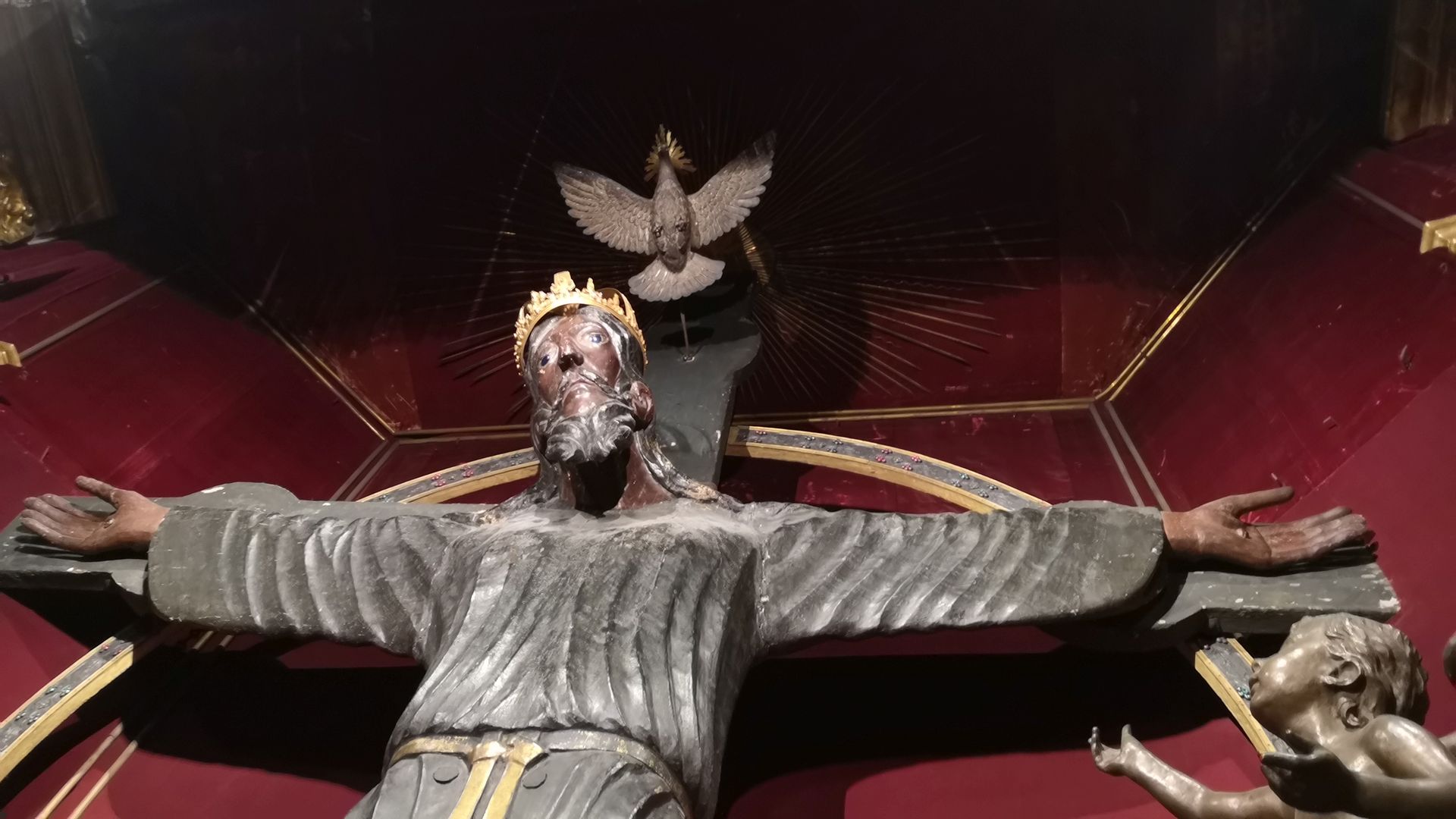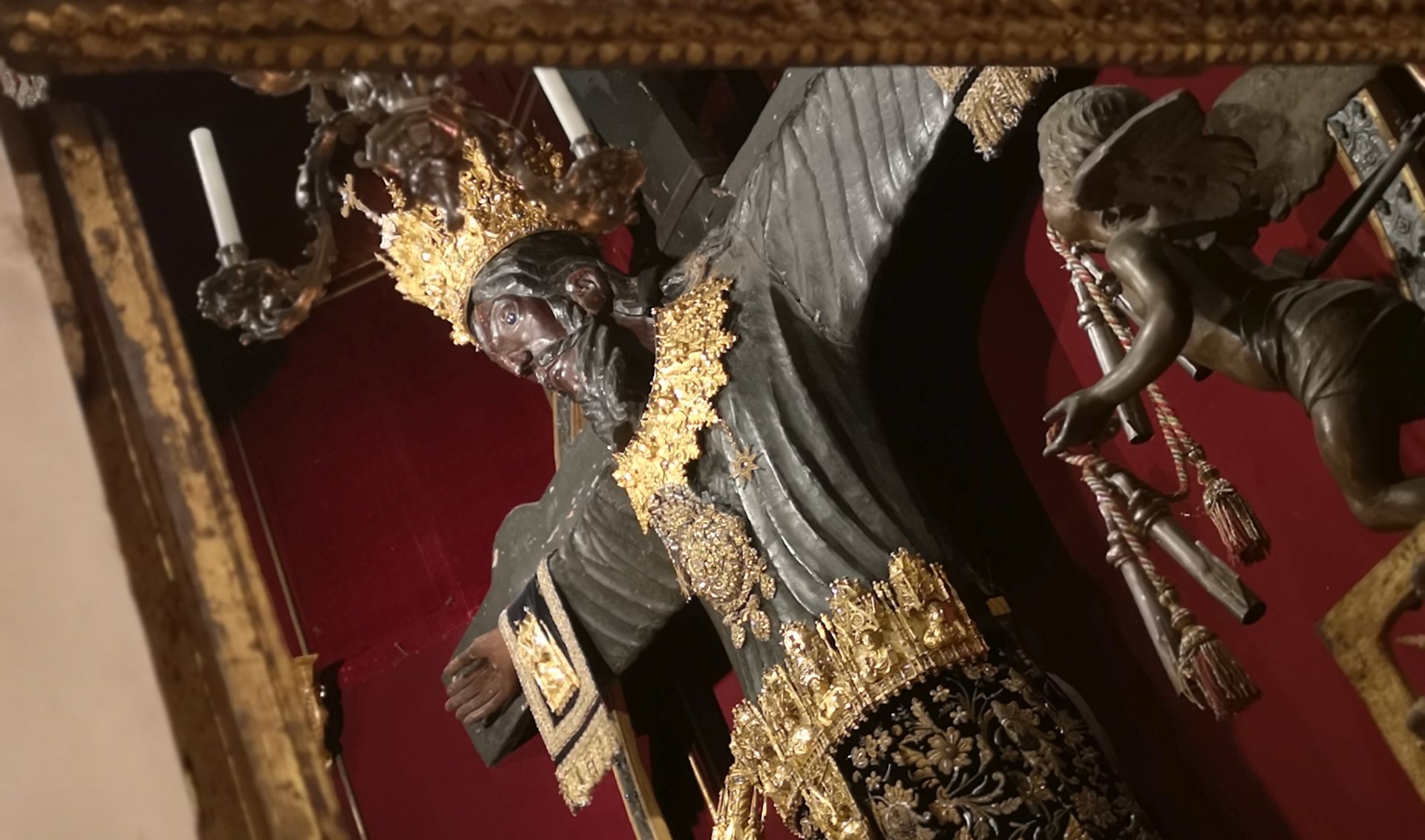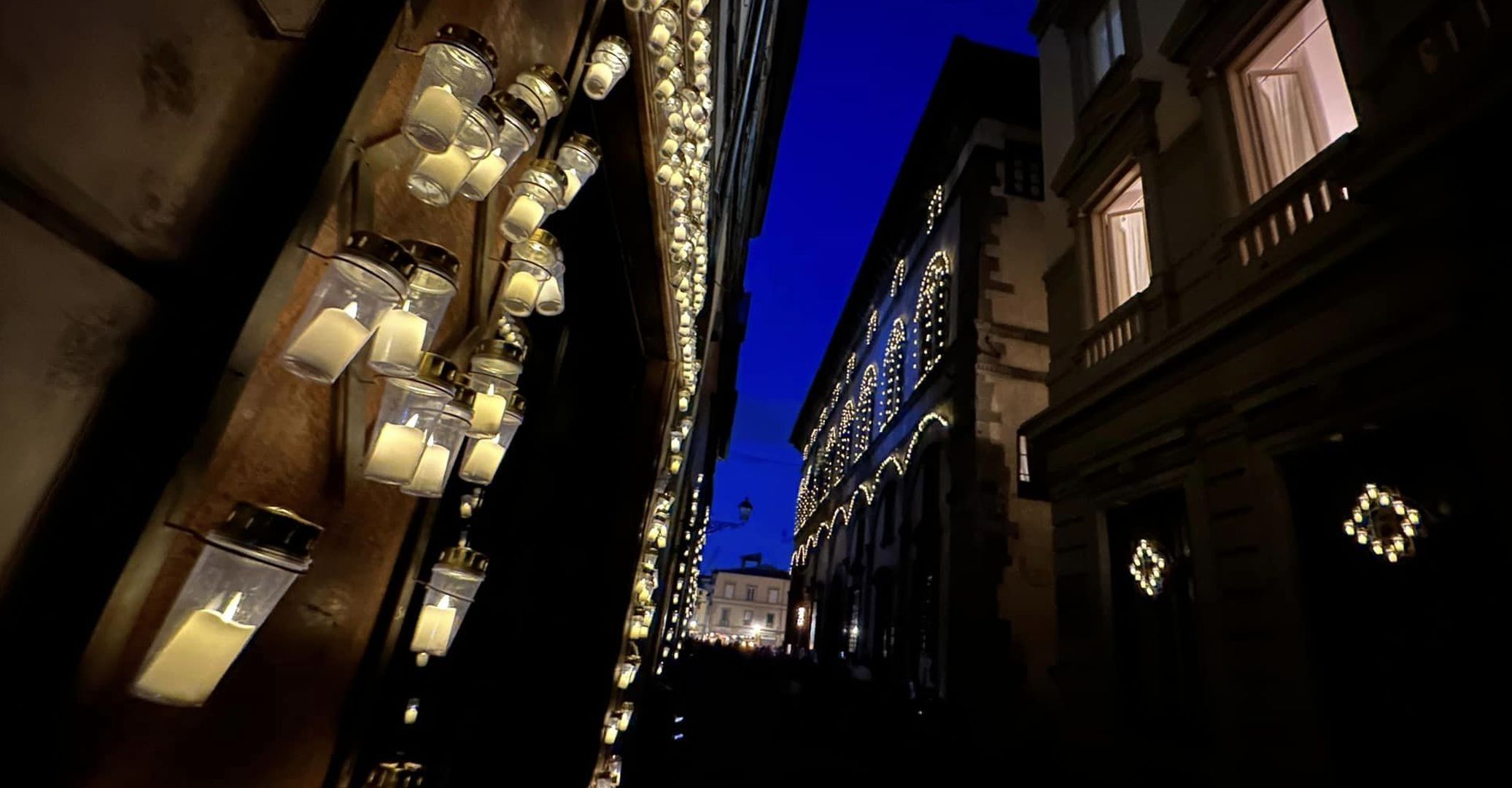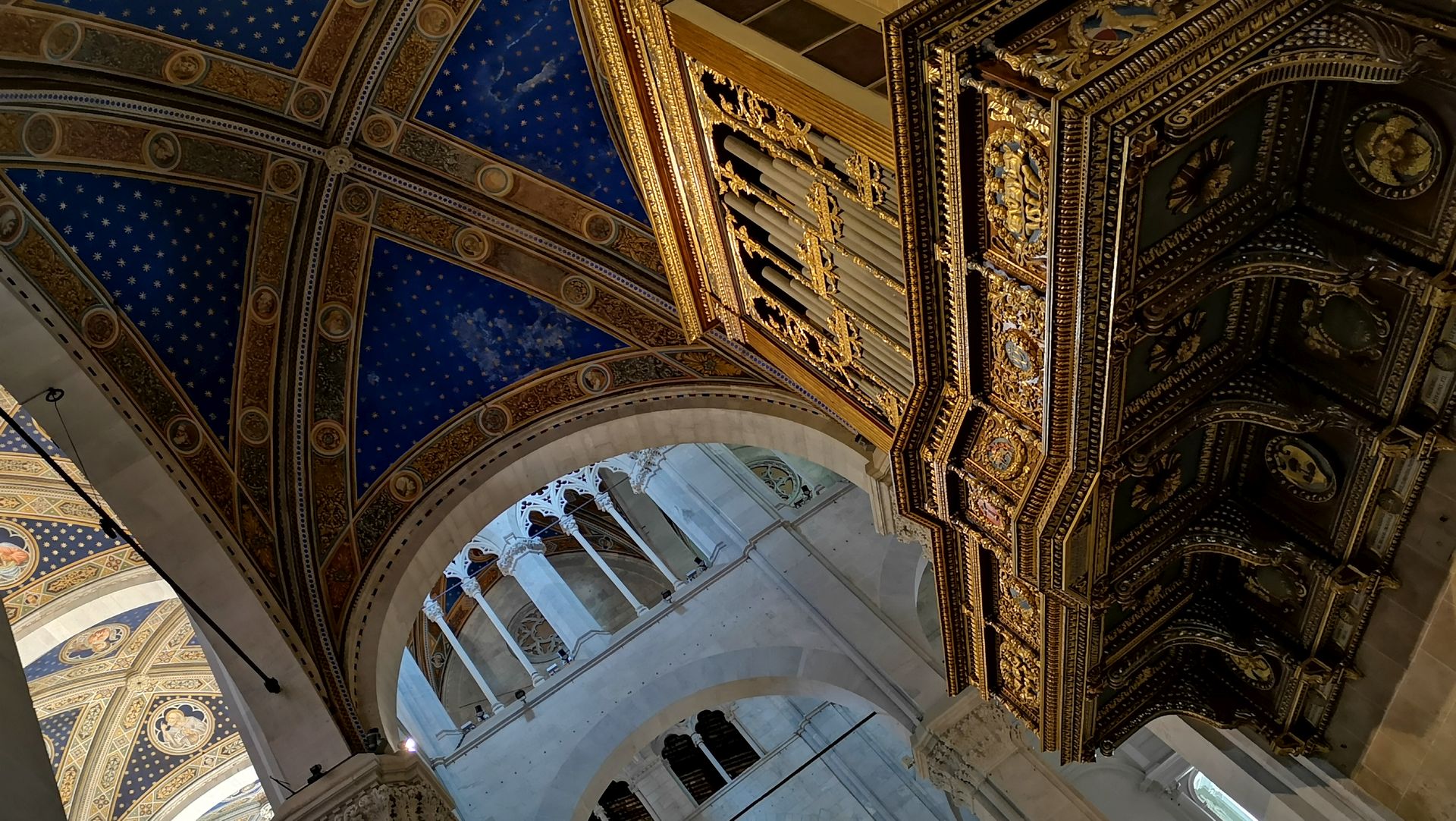THE LEGEND
In the 6th century, the deacon Leboino, told the story of how Nicodemus, with the help of two angels, carved a crucifix out of walnut wood with the true image of Jesus Christ.

To save the crucifix from the persecutions against Christian images, it was hidden in a cave, until the day in which Gualfredo, bishop of Siena, on the indication of angels, found it and ensured that it would reach its destination by crossing the entire Mediterranean sea on a ship without crew, escaping the raids of the Saracens, until it finally came to Luni in the year 782.
But the Crucifix could not be not approached until John I, Bishop of Lucca, warned in a dream by an angel, went to the beach and took it with him.
Contrasts arose between the two cities of Luni and Lucca and so two oxen accomplished the divine will by choosing to carry the cart on which the holy cross was placed to the gates of the city of Lucca.
In Luni the Bishop of Lucca left an ampoule with the blood of Christ, which is still preserved in Sarzana today.
The Crucifix was placed in the Church of San Frediano, but the following morning it disappeared. After a lot of searching it was found in the gardens of the Cathedral and brought back to the original place, but the event happened again several times until the people of Lucca were convinced to permanently transfer the cross into the cathedral.
HISTORY
The connotation of the image as an acheropita (created by divine intervention) and, moreover, a container for relics, is thus accentuated to ward off the accusations of idolatry of this large statue, one of the oldest and most venerated relics in the Middle Ages and, due to the its presence, a stopover for pilgrims along the Via Francigena.

Over the centuries, the cult of the Holy Cross called "Volto Santo" grew and was brought by merchants from Lucca throughout the continent along that same road traveled by pilgrims and which became an important trade route for the markets of Northern Europe, to the point of becoming the patron saint of the city despite the veneration of Saint Martin and Saint Paulinus.
Evocative legends, incredible miracles and precious treasures are related to the holy cross. Dante also mentioned it in the Divine Comedy, in canto XXI of the Inferno.
Centuries later, in 2020, scientific studies demonstrated the ancient age of the sculpture, confirming the dating of the legend of this Black Christ with a powerful look dressed and styled in an oriental style with a beard and long hair on the shoulders.
THE LUMINARA PROCESSION
The first mention of the procession on September 14 is from 1118.

On the evening of the 13th of September a night procession crosses the city illuminated by small candles in memory of the movement of the miraculous cross from the basilica of San Frediano to the cathedral of San Martino. Around this date the anniversary became the main one in the city: the feast of the Exaltation of the Holy Cross in which the Volto Santo is dressed in precious robes and the chapel that hosts it is open for the votes of the faithful.
The procession follows an established route that pays homage to the civil and religious authorities of the city, before reaching the Cathedral. The procession is opened by the enormously large Banner of the Volto Santo, painted in oil by the Lucca painter Michele Marcucci in 1890, followed by a flower cross made by the flower growers of Viareggio, and finally the cross of the Cathedral.
MUSIC
The procession ends with the performance of the Mottettone concert, a polyphonic composition, composed for the occasion by musicians from Lucca.

Polyphonic music has always been a special feature of the Santa Croce festival, but a unique aspect of the festival has been also polychoral music for centuries, a type of composition of Baroque origin, involving the use of two choirs and two organs. In Lucca it ended up becoming a main characteristic of the Santa Croce feast and survived attempts at reform until the early years of the 20th century.
During the month of September the music associations of Lucca and the Giglio theater with concerts use to pay homage to the Holy Cross and San Michele, whose name day closes the September events.
MARKETS
The period of the Santa Croce celebrations coincides with the traditional fairs at the end of the summer, a period in which food, supplies and utensils were brought to the city from the mountains and countryside before the winter.
In Lucca, in addition to the Santa Croce fair which opens the celebrations on September 14, and the San Michele fair which closes them on September 29, the San Matteo fair is celebrated on September 21.
Dozens and dozens of stalls selling curiosities and end-of-season offers, but also goodies to stock up on and the famous donuts called "frati" that you can't miss, invade the historic district of Borgo Giannotti with seasonal scents and colours. Alongside these fairs, the nineteenth-century space of the Foro Boario hosts animal fairs.
